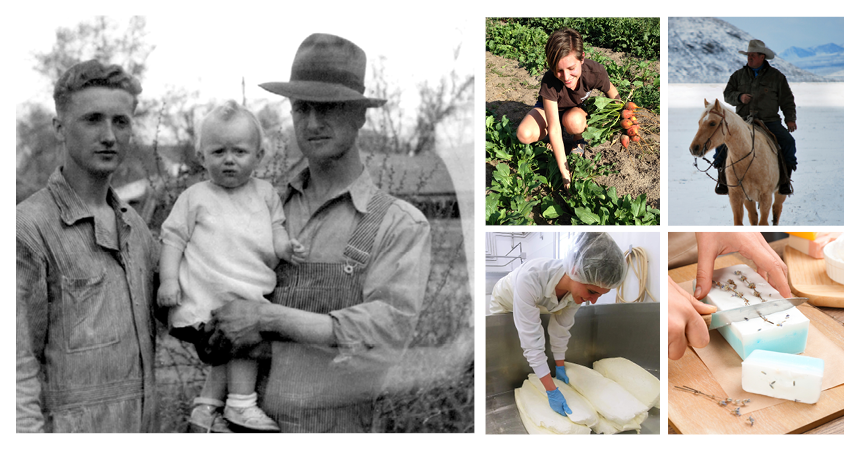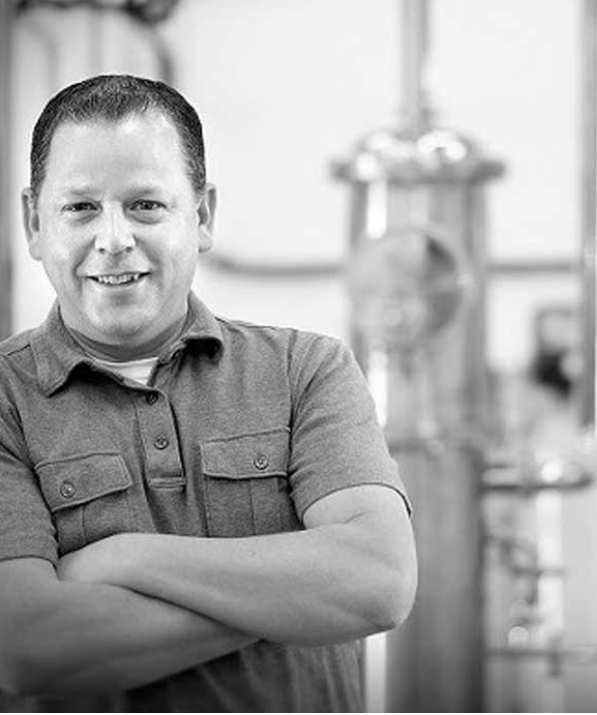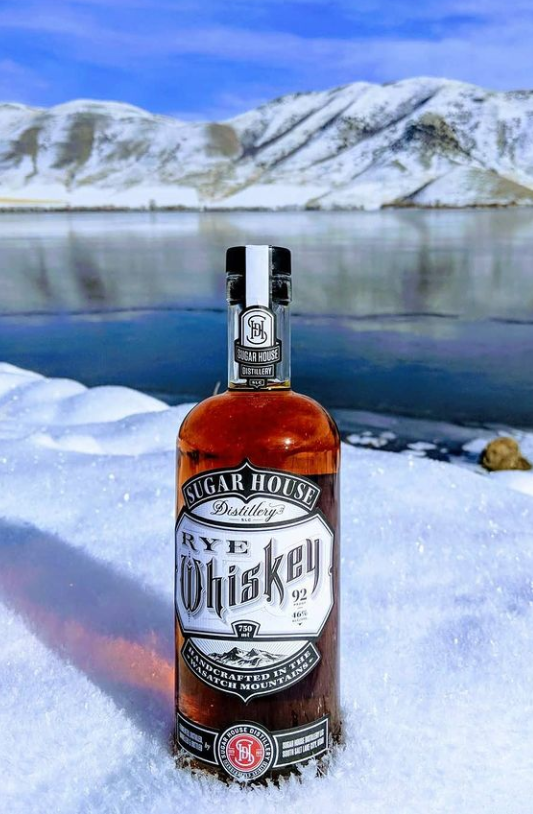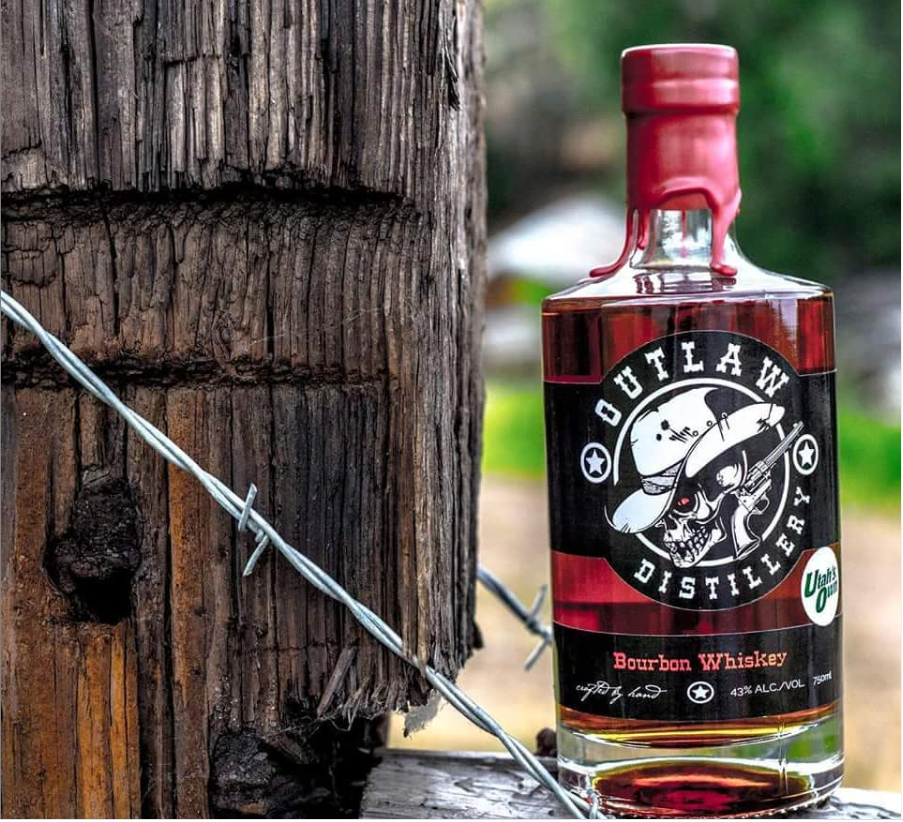
UTAH’S DISTILLING: GRAIN TO GLASS
While a law of health existed among Utah pioneers, the practice of making spirits, or distilling, was common among early settlers. In fact, by the time the continental railroad arrived in 1869, the IRS recorded 37 active distilleries within the state. These spirits were used as medicine as well as a way to preserve food that was subject to spoiling. (From “Mormonism and Intoxicants” Theodore Schroeder, Page 421. The American Historical Magazine, Volume 3, January 1908 – November 1908, By Publishing Society of New York, Americana Society).
Distilling was made illegal in Utah in 1919, as part of the wave of prohibition laws passed throughout the United States. However, legality didn’t mean the end of production within the state. From 1925 to 1932, federal agents in Utah seized over 400 distilleries, 40,000 gallons of spirits, malt liquors and wine, as well as 332,000 gallons of mash. “Yet that was only a small percentage of what was actually being produced as practically every community and every neighborhood housed an illegal still.” (Utah’s Distilling Heritage). Prohibition was eventually repealed in 1933 and the first state liquor store was reopened in Salt Lake City in 1935.
Nearly, 175 years later, Utah is still home to amazing craft distillers. James Fowler, owner of Sugar House Distillery and native of Bountiful Utah, is bringing new life and true pioneer grit back to Utah’s distilleries.
James’ fascination with local brews and spirits started as a young adult. He worked at several local breweries including Squatters to Red Rock, soaking in all the knowledge of the micro breweries and their craft. He loved it so much he set up his own brewing equipment and won several home-brewer competitions in the Intermountain West. As a purchasing agent, he traveled the nation often, visiting local breweries and peppering owners about their passions, processes and ingredients. When his career moved him to Dallas, he developed a deep love for quality whiskey and the beauty of distilling.
“At that point, I knew I wanted to open up my own distillery. I befriended several distilleries in Kentucky and Texas and told them of my desire to open my own distillery in my home state of Utah. James said. “They openly shared tips about their craft and even made fun of me saying, ‘Oh You’re going to be the Utah Whiskey Man.’”

Utah was James’ first choice for opening up a distillery not only because it was home, but also because of the quality of water and quality local grain. “Utah’s water has proven time and again that it is the best in the nation; plus I had to make a 100 percent malt whiskey, because Utah malt, cultivated from Utah-grown barley, is what we do best.” James said.
“Best” is the continual standard for the Utah distillers, seeking to create high-quality products from locally sourced ingredients. James, in true pioneer fashion, has established strong relationships with growers both in central and northern Utah. He joked in reflection that 10 years ago Utah farmers would only provide about 10 acres worth of grain until the venture proved profitable.

“I found farmers were thrilled to sell me their rye, because I make something out of it.” James said. “Rye has traditionally been planted as a rotating crop with corn to replenish and improve soil structure, and is then tilled in.”
Not only has James established a good relationship with grain growers, he also works closely with a hog producer to use his “spent” grain, the byproduct of distillation. As a result, the Utah-grown grain provides profits to the farmer, distillery and livestock grower without leaving the state, impacting the local economy far more than a national brand.
Because of James’ literal pioneering of the grain-to-glass movement within the state, other distillers like Tyler Halstead, from Outlaw Distillery, are now using Utah farmers to source local ingredients. Tyler recently became the new owner of Outlaw Distiller and dreams of the day the nation will recognize that the best spirits come from unexpected places like Utah.
Dedicated to the grain-to-glass model, both distillers are seeking to educate consumers on the difference between local and nationally made spirits.
“We love to educate our consumers that better quality spirits are sourced from locally grown ingredients.” Tyler said. “Just like there is room in the marketplace for an economical burger and a gourmet burger, this remains true for craft brews and spirits. However, in our world, that doesn’t always mean you’ll have to pay more for better quality. In fact, sometimes customers are paying gourmet prices for a national brand, when they could enjoy a much better quality with a more affordable local brand.”

For more information, visit their social media pages or websites. In addition, consumers can visit Utah Spirits Trail for the opportunity to visit even more of Utah’s pioneering breweries and spirits.
> Return to the July 2021 Cultivating Connections newsletter here.
